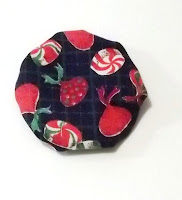How many of you have a bucket list? You know that list of things you want to do
before you kick the bucket. If you have a list, that’s great. Start doing some
of the things on your list. If you don’t
have a list, what is it you want to do in your life before you die?
You hear of many people who go sky diving or bungee
jumping. But what if that is not your
style, what do you want to do? Do you
want to travel? See the Grand Canyon?
The Eiffel Tower? Do you want to learn
something new? Not all of your bucket
list needs to be WILD adventures; some can be MILD adventures like learning to
bake bread.
I didn’t call my list a bucket list. It was known more as a “Some day I’d like to”
list. And not everything on my list is
an adventure or even expensive. I want
to learn to bake bread. I’d really like
to finish all the quilts I have started (and maybe some quilts I am thinking of
starting). I would love to read all the
books I presently own. And yeah, I would love to travel.
Maybe as a New Year’s Resolution, you could start planning
your bucket list. Think of the things you would like to do in your life. One might be going to New York City for New
Year’s Eve. What is it you would like
to learn? A new language, a new art
style, a new craft? What is it you want to
do?
As I mentioned before, where would you like to travel? It doesn’t have to be to another
country. Have you seen everything to see
in your city? Have you participated in
some local event you have always been interested in? The college where I work does the Nutcracker
Ballet every December. I love that
ballet but in the 28 years I have worked there, I had only gone once until this
year. I had so much fun I think now it
will be an annual event.
If you can’t think of anything for your list, ask family and
friends what you might have mentioned to them about wanting to do. You might not remember but they will. Or think back to what you liked to do as a
child. Did you sing into a
hairbrush? How about taking singing
lessons or join a choir? Did you wear
out box after box of crayons but never took art lessons? Take some art lessons. Your local college might offer continuing education
classes or a craft store might have a class or two. Do you like the symphony; buy a ticket.
Your bucket list doesn’t have to be a permanent list. You can change the items as you go through
life. You can add or subtract things as
your interests change. But do make a list. It is a great way to make sure your life is
enjoyable and has meaning. And if you are like me, you will be able to make a
great loaf of bread.
© 2016 Cheryl Fillion
























































